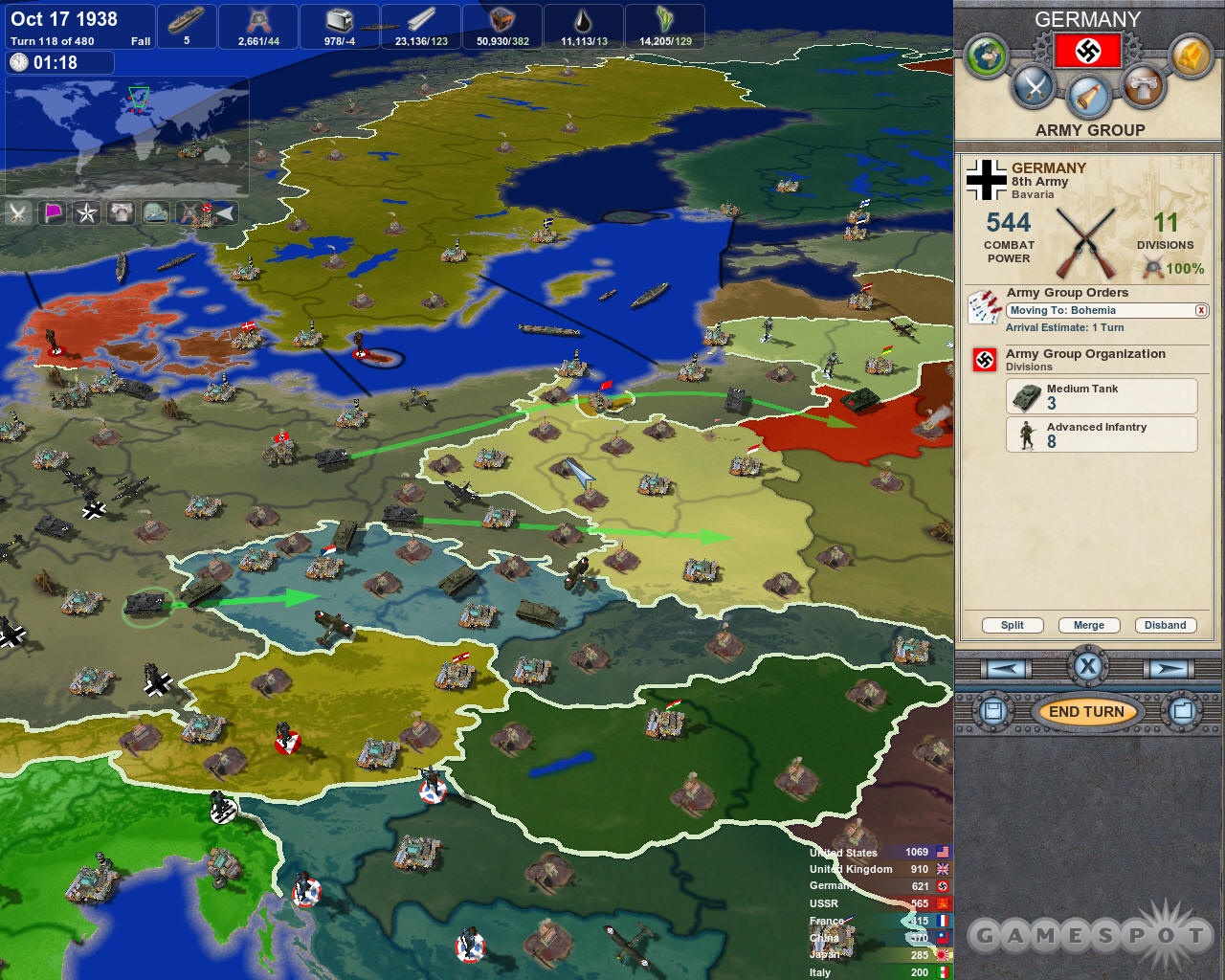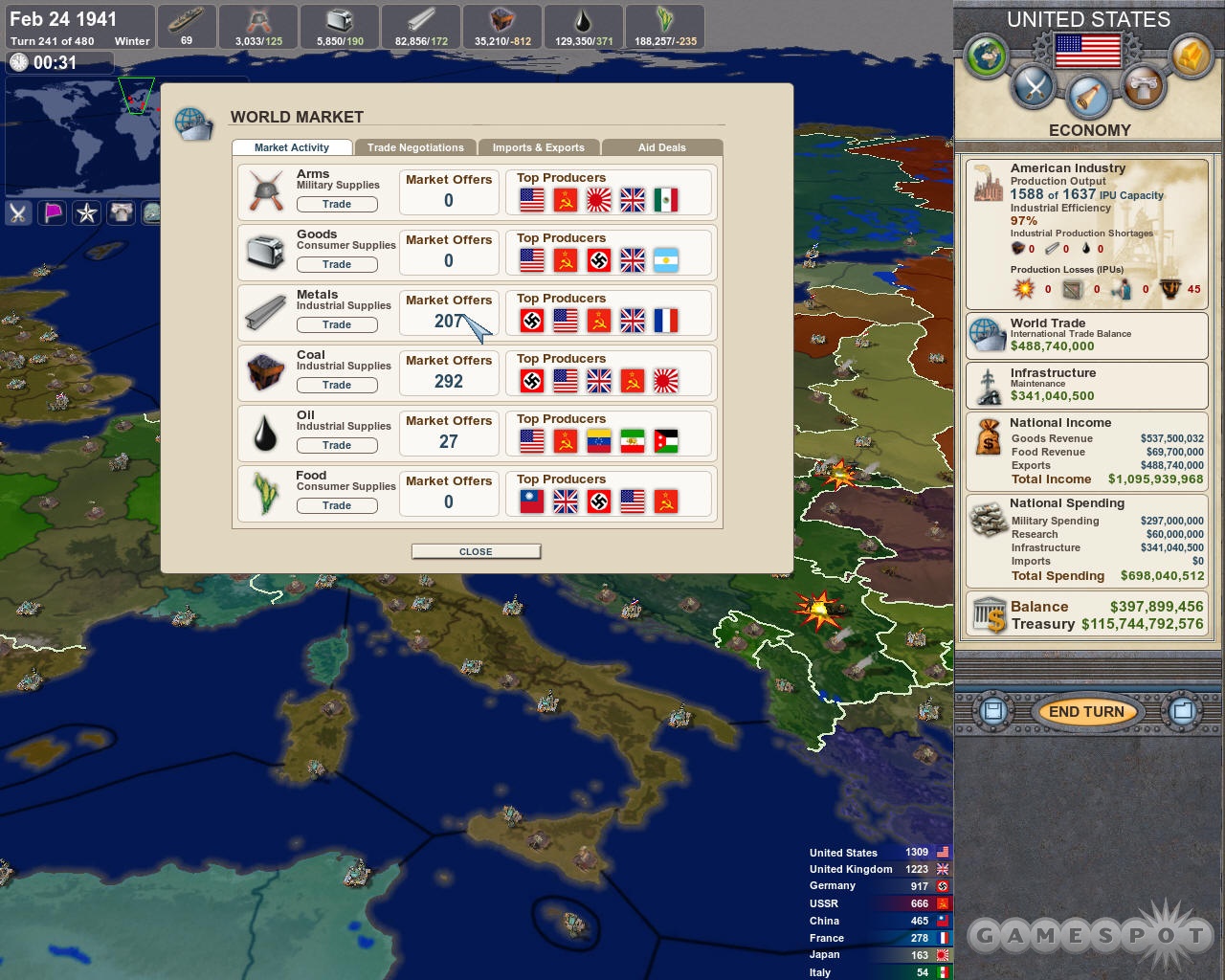Making History: The Calm and the Storm is a strategy game that has an interesting history of its own. Originally developed as an edutainment game for history teachers, it has evolved into a full-scale retail product about World War II. This is a turn-based strategy game that looks and feels like a board game, but also features a fair amount of depth and control. With that said, it's not as complex or as deep as Paradox's comprehensive Hearts of Iron series--but for something that's designed to teach the basics of World War II, it doesn't have to be. As it is, Making History is an interesting, though not gripping, game.

Making History lets you experiment with different historical outcomes of World War II. You're not constrained to follow historical events as they happened, so you can rewrite history if you want; imagine, for instance, if the United States had stayed neutral throughout the war, or if Germany and France had teamed up to invade the Soviet Union. However, enacting such scenarios probably won't give you any definitive answers if you were looking for them, mainly because the artificial intelligence is all over the place and a bit unpredictable. For instance, in one campaign, both the United Kingdom and Nazi Germany ended up dominating the globe as unlikely alliances were made and broken constantly. Still, it can make for some wild historical scenarios.
You can control any of the major combatants of World War II in Making History, and the varying start points offer different sorts of challenges. The earliest one has the world coming out of the grips of economic depression, as each nation attempts to reconstitute its economic and technological base and prepare for the coming storm. If you want to skip all the preamble and buildup, you can start at the beginning of the war itself, or even at the midpoint in the war. Your job is to come out on top, through conquest, diplomatic means, or a blend of the two.
The game gives you control over a nation's industry, scientific research, military production, war machine, and more, and you have control over everything, from how much each mine produces to buying and selling goods on the world market. The game requires you to juggle many demands, from generating enough revenue through production and trade to conducting long-term research that can eventually unlock nuclear weapons to jet engine technology. And, of course, you've got to worry about building up a military, all at the same time. It sounds complex, but everything can basically be tied to cities and territories. Your cities produce a variety of things, such as research points, consumer goods, arms, or military units, while your territories can provide resources such as food, coal, oil, and metals.
Still, there's a fair bit of micromanagement required to do everything. Production orders for each city must be regularly weighed and tweaked if you want to maximize your economy. You can order various types of infrastructure improvements in each territory, boosting food production, infrastructure, or defensive fortifications. Military units must be constantly produced, grouped, and ordered into battle, whether to invade territory or defeat an opposing army or navy. Trade and diplomacy must be monitored and dealt with. As a result, the game has a fairly steep learning curve, and it takes a while to understand the causal relationships between the many aspects of the game; also, attempting to dig down deeper into the simulation often results in lots and lots of numbers that are difficult to comprehend.

If you stick with the basics, it's easy to get drawn into the game. After all, strategy fans know the joy of researching a hot new technology and then turning that research around and building it into a weapon. With that said, Making History is a fairly dry game, and there's not a lot of drama or tension to it. One of the major problems is that most of the game consists of hitting the turn button over and over again until something important happens. Meanwhile, the artificial intelligence is easy to manipulate, and it's hardly aggressive unless you make a hostile move against it. The game does ship with a multiplayer mode that lets you play against others, and it's easy to imagine that in a classroom setting this would be particularly cutthroat as human players strived to undermine one another. But in a real-world setting it's hard to tell, since there never seem to be any servers up for the game.
At least Making History won't strain too many PCs out there, and the game's presentation is sharp and colorful. The interface is clean and modern, and the graphics themselves capture the board game feel of the game quite nicely. Units are modeled in 3D and look like little tokens. One especially nice touch is the way the game draws movement arrows around the map, as they look just like the animated diagrams seen in old World War II newsreel movies. Aside from the rousing national anthems that play in the game's background, the sound is pretty basic. Then again, this isn't a game that's really about a lot of flash and thunder. When you get down to it, it all feels rather academic.